1- Introduction
The problem of poverty has worried human society since ancient times. But, in spite of this, mankind has not managed to solve this problem and poverty continues to be an inalienable feature of any society.
Poverty is the lack of the ability to fulfill the most basic necessities of life. This is a state where a person, for a number of physical, psychological or external reasons, is unable to realize himself socially and culturally. Poverty is an indicator of the lack of justice and equity in society.
Poverty in any country of the world symbolizes the hunger and nourishment. as for Syria, it is an middle income country and 85 % of population suffering the disease of poverty creating hunger and under nourishment in them.
War in Syria has heavy human, economic, and social costs and is a major cause of poverty. The purpose of his study is to examine the effect of the war on poverty in Syria and to find some policies, which can help to reduce poverty in post war period.
2- Poverty in the world
Poverty is the enemy of the humanity:
‒ every day, poverty kills more than 50,000 innocent people — 18 million every year[1].
‒ More people die as a result of extreme poverty than of any other cause.
‒ A total of 1.45 billion people from 103 countries are poor (considering 2013 population data). 48 % of the poor people live in South Asia, and 36 % in Sub-Saharan Africa[2].
‒ About 896 million people in developing countries live on $1.90 a day or less and 22,000 children die each day due to conditions of poverty, Every 10 seconds, a child dies from hunger-related diseases[3].
‒ Due to the lack of infrastructure in most countries, 6 to 8 million people die annually from the consequences of disasters and water-related diseases [4].
The poverty rate at $1.25 a day is the proportion of the population living on less than $1.25 a day, measured at 2005 international prices, adjusted for purchasing power parity (PPP). In October 2015, the World Bank updated the international poverty line to $1.90 a day, and that is what we call the global extreme poverty line.
Measuring poverty is very difficult. A key difficulty in measuring global poverty is that price levels are very different in different countries, and every country sets its own standards for what is necessary for basic living. There are climate variations: what a person needs to survive in Central Asia for caloric intake, clothing, shelter, and heat is different from what is needed in a tropical location. And the standards vary with development. Richer countries will set a higher standard for what counts as poverty.
The poverty by continent is as follows:
‒ 383 Million in Africa
‒ 327 Million in Asia
‒ 19 Million in South America
‒ 13 Million in North America
‒ 2.5 Million in Oceania
‒ 0.7 Million in Europe
(World Development Indicators)
The World's 10 Poorest Countries
|
|
Poverty |
Clean Water |
Electricity |
|
1. Syria |
82.5 |
92.0 |
96.3 |
|
2. Madagascar |
75.3 |
14.0 |
15.4 |
|
3. Zimbabwe |
72.3 |
40.0 |
40.5 |
|
4. Nigeria |
70.0 |
28.0 |
55.6 |
|
5. Swaziland |
69.0 |
50.0 |
42.0 |
|
6. Tanzania |
67.9 |
12.0 |
15.3 |
|
7. Guinea-Bissau |
67.0 |
20.0 |
60.6 |
|
8. Sao Tome and Principe |
66.2 |
24.0 |
60.5 |
|
9. Liberia |
63.8 |
17.0 |
9.8 |
|
10. Democratic Republic of the Congo |
63.0 |
31.0 |
16.4 |
Source: The World Factbook 2016
3- The case of Syria.
Syria is a middle-income country with an economy based on agriculture, industry, oil, trade and tourism.
Economic liberalisation began in 1991, and over time Syria turned out from its socialist economy towards market economy.
In 2007 GDP per capita in Syria reached 2,058.04 USD[5]
War in Syria is one of the greatest humanitarian catastrophes of our time. More than 12.8 million people in Syria require health assistance and more than seven million are food insecure amid rising prices and food shortages. (UN Office for the Coordination of Humanitarian Affairs)
3.1. Pre-crisis Economy of Syria
There are some Pre-crisis information gaps:
— Labour force surveys have been undertaken, the latest one in 2011,
there are different factors that render results of these surveys incomplete: For instance, a large part of the economy is informal and is not covered by the surveys.
— The Central Bureau of Statistics of Syria website is no longer online. This has lead to difficulties in accessing the official figures of the baseline data.
—The structure of the Government-oriented economy, which does not disclose all the information to the public especially during shocks, is a major obstacle to analysis and forecasts.
Pre-crisis Syria ranked among the most secure countries and it was «fast-growing country from the lower middle income countries, and overall. GDP grew by 4.3 per cent between 2000 and 2010,this growth covered by non-oil sectors[6].
Gross domestic product (GDP) in Syria in 2010 exceeded 64 billion dollars, the government's contribution in Gross domestic product (GDP) reached 22 %, while the Syrian oil sector ranked 27th in the world in terms of production, which exceeded 400 thousand barrels per day, while oil revenues were7 % Of GDP.
Syria recorded a debt estimated between 19 % and 23 % of GDP in 2010, low compared to world averages[7]
The agriculture sector has a major importance in Syria,it contributes an estimated 22–24 % of the GDP of Syria and agrarian products constituted 16–22 % of total exports in 2010. About 80 % of the rural population in Syria practised farming for their livelihoods, either on their own farms or as casual labourers[8].

GDP — composition, by sector in Syria before the war
Source: Syrian Center for Policy Research, 2013/03
All the components of GDP, consumption (private and public), investment, government expenditure and trade have been severely impacted by the crisis.
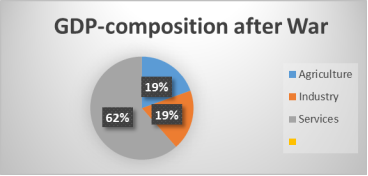
GDP-composition, by sector in Syria after six rears of the war
https://theodora.com/wfbcurrent/syria/syria_economy.html
3.2. Poverty in Syria before the war.
The five-year plans of successive Syrian governments have failed to eliminate poverty or stop the decline in the standard of living of citizens in Syria, despite placing it at the top of the list of general objectives of those plans, because of weakened of the policies and economic strategies that were followed by those governments, on the one hand, On the other hand, wasting the resources and capacities of the country as a result of the failure of the policies and showing the misleading economic indicators that were issued by the public sector institutions which were aimed to polish the reality of these institutions and their economic activities and to reflect the fake efficiency of the managers who are based on them.
Figures on poverty rates from Syrian government were often incorrect.
In October 2004, according to a report on the results of the survey of income and expenditure of Syrian households issued by the Central Bureau of Statistics, in which the poverty rate in Syria is only 7.7 % and in another report released by the State Planning Commission in February 2012 the figure was 11.4 %.
The latest poverty survey is from 2007 and there is a lack of updated statistical data on poverty levels per governorate.
According to a 2007 UNDP report on Syrian poverty, extreme poverty was affecting around 12 % of the population (around 2.4 million people).
A report issued by the Organization (ESCWA) said that this figure exceeded 23 % in 2010.
The north-eastern region has traditionally been the poorest area, with an extreme poverty rate of 15.4 %. Poverty and food insecurity is most prevalent among agriculturalists and nomads.
According to official statistics, the poverty in Syria before the war hovered around the 30 % of population. This means that a third of Syrians lived on or below the poverty line.
The problem of poverty before the war was generated by the interaction of a number of causes.
We can summarize the causes of poverty in Syria that it a result of inherited policies and inefficiency in the development of human and natural resources.
These causes can be divided into two categories:
External and internal.
The important aspect as regards the external factors were bad international Political and Economic relations. Syrian foreign relations before the war were unstable with other countries especially with USA and Europe,this affected on Syria's integration into the global capitalist economic system. Syria was isolated both regionally and internationally, this made a risk for foreign investors. The sovereign risk for Syria’s public debt stock was high given Syria’s poor repayment record, hence Syria was ineligible to borrow from the multilateral institution.
As regards the internal factors, three factors can be observed:
‒ Natural causes
Syria is a country of limited resources, It is an agriculture country with a limited area of land suitable for agriculture and in particular irrigated Agriculture.
Poverty in Syria increased by Climate Changes,It has faced a lack of rainfall and drought in last years.
These factors have had a clear impact on the entrenchment and exacerbation of poverty within most Syrian provinces.
‒ Social legacies causes
The most significant of these legacies is the abstention of men in some areas of Syria from undertaking agricultural and artisanal activity, tasking women and hired labourers with performing work which they are capable of doing themselves.
A second factor within this group, also related to women, is the fact that many people are still resistant to the idea of women working, or object to women undertaking particular forms of work.
‒ The policies causes
These policies which have led to increased poverty. Over recent years such policies have exacerbated this problem in spite of their publicised aims of fighting or reducing poverty.
A-The first, and most significant, of these factors is the content and result of the economic and social development plans which have been established and implemented by successive Syrian governments. These plans have demonstrated the authorities' inability to execute real, serious development.
These ill-thought out policies and unforeseen natural transformations has driven hundreds of the region's residents to migrate either internally or externally, fleeing from poverty and destitution.
B- Financial and taxation policies,which leaded to rising rates of inflation and unfair treatment of the lower social classes. Taxes applied to the lower classes such as civil servants, most of whom are poor, have been intensified, while exemptions, soft taxation policies and facilitations are granted to the wealthy and to project owners.
C- Corruption through:
‒ spread of the theft and appropriation of public wealth and the state's lands,
‒ taking of commissions and bribes.
‒ squandering of talent and energies.
‒ destruction of potential and opportunities which could contribute towards development and progress
D- Collapse of the social security system, which — despite the extreme weakness that characterises this system in Syria — affects the poor and needy more than others.
E- Manifested in the government's reluctance to tackle phenomena which strengthen the grip of poverty. These include unemployment, corruption, the collapse of education and lowering levels of training.
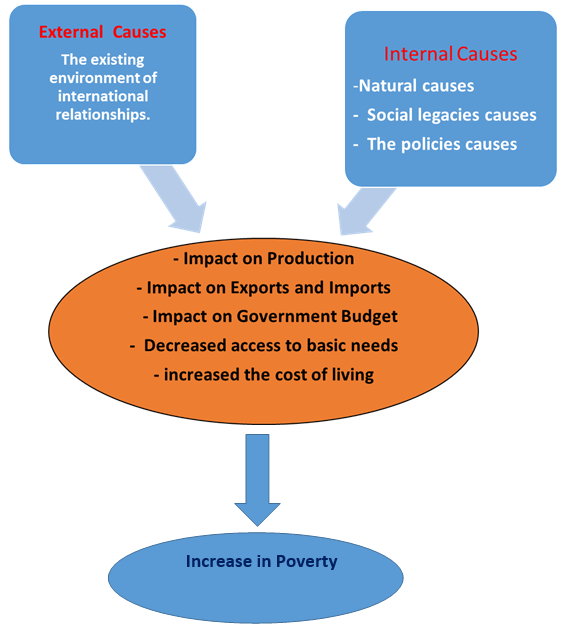
Causes of Poverty in Syria before the war
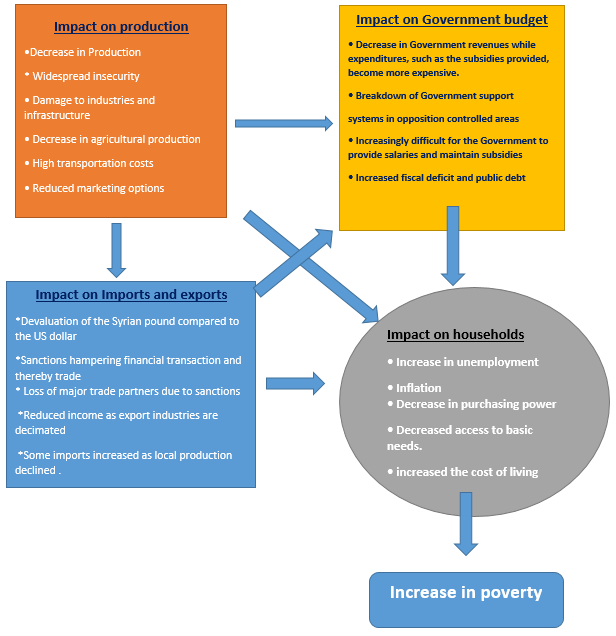
Impact of the crisis on the Syrian economy and Poverty
3.4. Syrian Economy after six years of war
There are information gaps in this period:
‒ The informal economy has reportedly increased during the conflict.
‒ The data of this period is primarily based on estimations or numbers relying on assessments and economic models.
‒ There is little information available on market related issues such as the pre-crisis and current market supply chain.
Syria's six-year conflict has ravaged its infrastructure and caused losses to its economy of $226 billion, according to estimates by the World Bank[9].
The crisis and associated sanctions have disrupted trade and markets. Oil production has decreased dramatically and phosphate exports halted.
Over 800,000 houses have been partially or severely damaged in the conflict, and 400,000 have been destroyed (documents.worldbank.org)
The unemployment rate is estimated at about 50 %, up from about 10 percent at the beginning of the conflict[10].
An estimated USD 16 billion worth of agricultural production and assets has been damaged and destroyed since the beginning of the war, according to FAO
The World Bank found an average of 538,000 jobs had been lost annually between 2010 and 2015. The unemployment rate is estimated at about 50 %, up from about 10 percent at the beginning of the conflict.
More than half of all Syrians have been forced to leave their homes — over 14 million people need humanitarian assistance, including more than 6 million children[11]
4.3 million people are in need of shelter assistance throughout Syria[12]
The lack of safe drinking water in many besieged and hard-to-reach areas is increasing the risk of waterborne diseases.
6.9 million people are food insecure in Syria. An additional 3.1 million people are estimated at risk of becoming food insecure[13].
8.2 million people are in need of WASH. Two thirds of the population have no consistent access to safe water[14].
Poor sanitation is a concern across the country
A total of 4.4 million children and pregnant and lactating women were in need of nutrition support[15].
No electricity is available in several areas of the country
Due to the conflict, 6.1 million people are in need of education assistance. 1.75 million children are out of school[16].
3.5. Poverty in Syria after 6 years of war
War in Syria has been identified as a cause of the persistence of poverty. This is as a result of the damage to infrastructure, institutions and production; the destruction of assets; the breakup of communities and networks; and death and injury to people. These outcomes of violence may push vulnerable households below the poverty line, particularly amongst households with widows, orphans and disabled individuals.
Due to the conflict, extreme poverty has increased from 2.2 million in 2010 to 3.7 million in 2012[17]
FCFS (Firil center For Studies FCFS, Berlin, Germany) conducted an economic research on the living conditions in Syria in May 2016. It was found that in order for the Syrian citizen to live a life similar to what he was living in 2010, his monthly salary must be 240 thousand SP, equivalent to $ 470, while the Syrian employee today about 18 thousand pounds per month, or equivalent to $ 35 per month and $1.16 a day.
According to FCFS, the majority of Syrian families are living below the global poverty line (with the exception of war traders), the World Bank in 2015 raised the poverty line to $ 1.9 per day per person, which is not realized in Syria today.
The majority of Syrian families, especially in the besieged-contiguous areas, live with the lack of basic necessities of clean water and foods, as well as medicines and sterilizers.
In 2013, 2014 and 2015, there were cases of starvation or lack of treatment and medication in the besieged areas, in addition to cases of permanent disability caused by harsh war conditions.
Poverty continued to deepen throughout the country. Household budgets of the increasingly jobless, poor and desperate population are being squeezed by price inflation of basic goods and heating and cooking costs. The prices of basic goods are usually higher in conflict zones than elsewhere due to their scarcity as a result of the security situation, limitation on transportation and lack of access due to blockades. In general, the governorates with the most widespread and intense levels of armed conflict and lowest levels of security have the highest unemployment rates, as well as the highest poverty rates. The number of people living in poverty is continuously increasing. Around 50 per cent of the population are unable to even meet their basic food needs.
Population below poverty line 82.5 % (2014 est[18].
4 in 5 people in Syria lived in deepening poverty by the end of 2016.
85 % of the population are living in poverty. 69 % of the population are living in extreme poverty, 35 % of whom are living in abject poverty.
Nearly 7 million children in Syria are living in poverty[19].
Poverty in Syria has economic, political, demographic, geographic, environmental, and policy roots and causes.
To evaluate impact of the war on poverty in Syria we made a questionnaire on google drive.

The questionnaire has been sent on September 23th till 16th of November. 116 responses have been received. The result and analysis of questionnaire were as below.
4. The results and analysis of questionnaire
To analyze the Results of Questionnaire I used Excel and SPSS statistical programs.
The SPSS Statistical procedure requires all variables to be numeric. So all used data have been changed to numeric as below:
Age
18–25 1
26–35 2
36–45 3
46–55 4
56–65 5
65+ 6
Sex
Male 1
Female 2
Profession
Public Sector employee 1
Private sector Employee 2
Private job 3
Unemployed 4
Education
Ph.D. 1
Master 2
University 3
Secondary school 4
Basic Education 5
Region
Damascus 1
Reef Damascus 2
Homs 3
Hama 4
And so on all other cities
Average Monthly Expenditure and Average Monthly Income have been symbolized as bellow:
0–10.000 1
10.000–15.000 2
16.000–20.000 3
21.000–25.000 4
26.000–30.000 5
31.000–35.000 6
36.000–40.000 7
41.000–45.000 8
46.000–50.000 9
51.000–55.000 10
56.000–60.000 11
61.000–65.000 12
65.000+ 13
Analysis of Questionnaire
4.1 Age

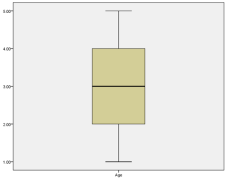
As we see on box plots graph the median of age was 35–45 years (it is 3 by SPSS). This slice of population is more suffering from the life problems, the most of them already have big families and they need different of expenditures for their children.
4.2 Gender of respondents:

As we see that the majority of the respondents are women (56.9 %) this reflects the case of Syrian society because of the war, hundreds thousands of men have fled from the country or joined the army the army then many hundreds thousands of them have been killed.
4.3 Profession

The most of respondents are private sector employees (54 %) and who has a private job (27.6 %). In Syria private jobs and the jobs in private sector give more salaries and incomes, so responses from this sector in our questionnaire will give us clear picture about the level of the life in Syria.
4.4 Region


We see that the majority of respondents are from Damascus 65.5 %.
Because of:
1- huge percent of rural population has displaced to Damascus.
2- the majority of job opportunities concentrated in Damascus.
3. access to internet in rural regions is limited.
4.5 Average Monthly Expenditure:
4.5.1 Monthly Food Expenditure

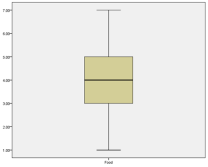
We see that average monthly food expenditure is about 25.000 Syrian Pounds (52 $).
4.5.2 Monthly Clothes Expenditure

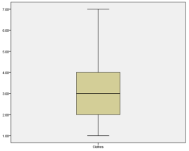
Average monthly Clothes expenditure is about 20,000 Syrian Pounds (42 $)
4.5.3 Monthly Housing Expenditure



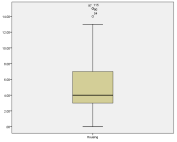
25,000 Syrian Pounds (52 $) is the average monthly housing expenditure.
4.5.4 Monthly Education Expenditure.


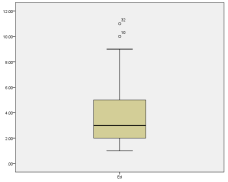
Average monthly education expenditure is about 20.000 Syrian pounds (42$).
4.5.5 Monthly Health Expenditure

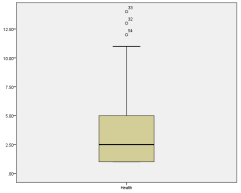
Average monthly health expenditure is 15000 Syrian pounds (31$)
Average Monthly Expenditure
25.000+20.000+25.000+20.000+15.000=105.000 Syrian Pounds (218 $ monthly) (7.3 $ a day)
4.6 Average Monthly Income
4.6.1 Salaries/Wages


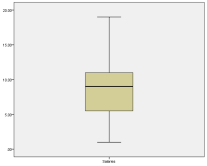
We see that only 5 % of respondents receive more than 60.000 Syrian pounds monthly (125$ monthly) (4.2 $ daily)
12.9 % receive 56.000–60.000 Syrian Pounds (106 $ -117 $) (3,8 $ daily)
19,8 % receive 51.000- 55.000 Syrian Pounds (106 $- 115$) (3.5 $ daily)
10.3 % receive 46.000–50.000 Syrian Pounds (96 $-104 $). (3.2 $ daily)
7 % receive 41.000–45.000 Syrian pounds (85 $ — 93 $) (3 $ daily)
7.4 % receive 21.000- 25.000 (44 $- 52 $) (1.6 $ daily)
2.6 % receive 16.000- 20.000 (33 $- 42 $) (1.3 $ daily)
2.6 % receive 10.000- 15.000 (21 $- 31$) (1 $ daily)
And we see that 62.3 % live in poverty they receive less than 46,000 (3,2 $ per day).
From them 31,2 % are live on less than 1,9 $ a day, according to international poverty line they are living in extreme poverty .And 6,5 % are living on less than 480 Syrian pound a day(1$) and they living in abject poverty.
4.6.2 Pension


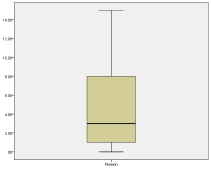
We see that 87.8 % of pensioners receive less than 45.000 Syrian pounds monthly (95,8 $ monthly) (3,19 $) daily, so they are living in extreme poverty.
4.6.3 Rent Property

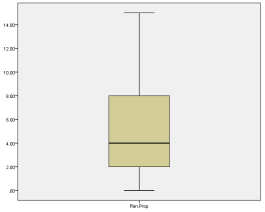
We see that the average of rent of poverty is 45000 Syrian pounds (95.8 $)
4.6.4 Other income

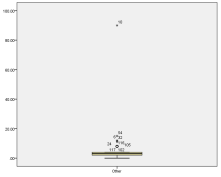
We see that the average other income is 30.000 Syrian pounds (62.5 $ monthly) (2 $ daily)
This income can to increase incomes of some families and reduce poverty rate.
4.7 Number of family members

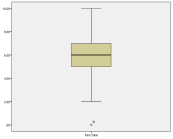
We that 56 % of respondents have 2 persons are working,25 % 3 persons and 14 % one person works. And we see that the average of Syrian family is 5 persons.
5. Experiences of some countries in poverty reduction
5.1. China
China has become the largest country in the world in terms of the number of people who have been pulled out of poverty, and at the forefront of the world's nations that have achieved the United Nations Millennium Development Goals. The proportion of Chinese living in extreme poverty dropped from 61 % in 1990 to less than 30 % In 2002, to 2.4 % in 2014.(White Book, The State Council Information Office, October 2016)
Economists generally attribute much of China’s rapid economic growth to two main factor: — large-scale capital investment (financed by large domestic savings and foreign investment) — rapid productivity growth.
These two factors appear to have gone together hand in hand. Economic reforms, which included the decentralization of economic production, led to substantial growth in Chinese household savings as well as corporate savings. The large level of savings has enabled China to substantially boost domestic investment.
The poverty reduction in China has been supported by sustained economic growth, which works through:
‒ Creating jobs
‒ Increasing demands for agricultural products.
‒ Increasing the fiscal capacity for financing the poverty reduction program
‒ Improving physical infrastructure.
‒ Improving technical extension networks.
‒ Industrialization of agriculture.
‒ Restructuring production organizations.
The Chinese government has put a program to reduce the poverty of 70 million poor people by the end of 2014.
through development, established special assistance to the poor, earmarked special funds for this purpose, developed special preferential policies, planned and organized large-scale assistance to the poor in order to solve the problem of Poverty through economic and social development in poor areas.
Poverty reduction program in China contained next directions:
‒ For the poor who have the ability to work and the skill of production, they have been supported by the government by developing different industries in a way that suits the local conditions, driving them on the road to sustainable development of self-generated growth.
‒ For the poor in areas with harsh conditions and fragile ecosystems that lack the conditions for production and life, they have been resettled in places with conditions suitable for production and life at the expense of the government to rid them of poverty.
‒ For the poor who have the ability to work, especially young people, they have been assisted in employment in the industrial and services sectors, through vocational training and professional skills, to get them out of poverty through employment.
‒ For poor people who are unable to work and cannot get rid of poverty based on industrial support and employment policies, they have been freed from poverty by being included in the rural minimum life assurance system.
5.2. Malaysia’s Experience with Poverty Reduction:
Poverty rate has dropped about 48.4 % in 37 years,the rate has come down at 1.7 % in 2012 when it was 49.3 % in 1970. (International Journal of Ethics in Social Sciences Vol. 2, No. 2, December 2014)
The strategies worked out in Malaysia to tone down poverty took on many important fronts:
The sectors were given high priority are as follows: (Hatta & Ali, 2013)
‒ Advancing agricultural sector
‒ Strengthening small medium enterprises
‒ Improving welfare of student
‒ Strengthening pre-school education
‒ Improving literacy and numeracy
‒ Creating quality school
‒ Increasing home ownership
‒ Expanding public health facilities
‒ Enhancing social safety nets
‒ Improving retirement scheme
‒ Microfinance
‒ Community Involvement
5.2.1. Things to Learn from the Development Experience of Malaysia
Economic Planning Unit (EPU) of Malaysia with the cooperation of World Bank presented some facts in a work relating to poverty reduction in Shanghai Conference in 2004. Following recommendations have come out of that work. Edited format is as follows (Bank, 2004):
First: Each country must put together its core development philosophy, policies, and plans suited to its particular incidents and needs. It must also persevere while remaining hardheaded and stretchy enough to adapt plans so that they remain relevant and suited to changing circumstances.
Second: There is a real need for peaceful coexistence among racial or other groups and close cooperation among political parties for political stability and socioeconomic development.
Third: If a country is to achieve sustained and swift economic development, it cannot accept racial or any inter-group strife and violence, especially on a prolonged basis. Any political solution to inter-group conflicts, through some formula of power and wealth-sharing, has to be viable and enduring.
Fourth: There must be sustained and rapid economic growth to create new jobs, business opportunities, higher incomes, super infrastructure, and increased wealth. This requires capable and effective management of the macroeconomy by the public sector and of industries by the private sector, as well as close rapport between the two. Continuous growth is also facilitated by an export-oriented and resilient economy.
Fifth: Sustained economic growth requires strong governments and leaders committed to national, not personal, interests over a sustained period of time. The eradication of poverty requires two broad types of strategies: expansion of the economy and government-run affirmative action programs targeted to the poor.
6. Experience in poverty reduction in countries with different levels of economic development
The fight against poverty in different countries covers all aspects of the social policy of the state and includes social protection, social security and social insurance systems. National systems of social protection are diverse, and, at first glance, similarities are difficult to distinguish. Nevertheless, their typologization is possible.
6.1. The Continental (Bismarck) model (Germany, Netherlands, Australia, Switzerland, France) provides for the interdependence between the level of social protection and the duration of work. It is based on the most powerful compulsory social insurance, services directed to various forms of insurance: medical, pension and unemployment insurance.
The state acts as the guarantor of fulfillment of obligations on insurance at occurrence of last financial difficulties. In addition, the state takes measures against the domination of cheap labor in the labor market. In the Netherlands, Denmark, Germany and Belgium, France in the framework of the system of prevention of violations, mandatory minimum wage for all employers, sufficient to meet the basic needs of the worker. As a result, the minimum wage in France is almost 60 %, in the remaining countries — about 50 % of the average level
6.2. Liberal model of social protection (UK, Ireland, USA, Japan): a system of social protection based on the principles of universality (covering all members of society in need of material support) and uniformity of social services (equal pensions and benefits, uniformity of conditions for their payment).
Within the framework of the liberal model, some country peculiarities are singled out. So, in the US and Japan, social assistance programs are scattered and targeted to individual categories of the poor. Benefits are set at a level to contain the process of impoverishment, but not to eliminate it. Such a policy proceeds from the logic that the state of poverty is the result of a personal choice of the individual.
Let's notice that among the most developed industrial countries of the world the USA and Japan are in the lead on a level of relative poverty of the population. According to the OECD, families receiving less than half of the average income in the country, in the US — 13.7 %, in Japan — 13.5 %. In the US, poverty alleviation programs cover about 15 % of the population. Assistance is provided by two criteria: if a person is poor or belongs to one of the subsidized categories.
6.3. The South European (rudimentary) model of social protection (Italy, Spain, Greece, Portugal) is characterized by a relatively low level of social security, and social protection is the prerogative of the family and relatives. Unlike previously presented, this model can be interpreted rather as developing, therefore, without a clear organization. A typical feature of the rudimentary model is the asymmetric structure of social expenditures. For example, in Italy, this is manifested in the fact that the largest part of social expenditures is made up of pensions (14.7 % of GDP at the European average — 12.5 %), while little funds are used to support the family, education and employment policy (about 1 %).
6.4. The Social Democratic (Scandinavian) model (Denmark, Sweden, Finland, Norway) has a wide coverage of various social risks and life situations that require support of society. Social services are guaranteed to all residents of the country and are not conditioned by employment and payment of insurance premiums. The level of social protection is high, which reduces poverty in these countries to the lowest in the world. Social policy is based on the fact that poverty is a disease of society, and the poor become in the course of the market process, not having time to adapt to the conditions of a changing labor market. This model is most vividly represented in Sweden, where one of the lowest poverty levels in the countries of Western Europe is observed.
Based on the analysis of foreign poverty reduction strategies and social protection systems, it can be concluded that there is no simple single plan for poverty reduction. Nevertheless, if some countries can make significant progress in reducing the many manifestations of poverty, other countries can do the same. However, it should be understood that each country has its own characteristics and blindly copy the experience of social protection of developed countries is unacceptable. This actualizes and causes the need to analyze the models of social protection of foreign countries and the transition to a holistic policy aimed at reducing poverty in post war Syria.
7. Suggestion strategy for poverty production in Syria in Post-war period
The experience of developed and developing countries shows that the poverty reduction strategy should include various directions of state policy. For socially vulnerable groups of people, those who are rejected by the market (old people, disabled people, etc.), a policy of social support and ensuring equal access to social benefits should be implemented. Anyone who is incapacitated, regardless of income, must have access to health care, and if necessary, to social welfare benefits.
The main cause of poverty of the able-bodied population is unemployment, so it is necessary to expand the opportunities for productive employment and create a system for ensuring each sustainable source of livelihood. Professional training and professional development should lead to an increase in the productivity of the poor. At the same time, the poor will not only benefit from economic growth, but also contribute to it.
The Strategy is made up of three pillars:
‒ pro-poor sustainable economic growth
‒ inclusive social development
‒ good governance, which also includes the cross-cutting priorities of environmental sustainability, gender equity, private sector development, and regional cooperation
Reformulating the state's public policies in several main areas:
‒ Political and government conviction and commitment that only human development is capable of generating economic growth translated in the form of redistribution of investments to achieve human development.
‒ Full decentralization of authority and decision-making and the main role of participation in determining the importance of projects to members of each community through community institutions that enjoy freedom and democracy.
‒ Shorten the role of thinkers and development specialists in the presentation of development paths and contribute to accurate diagnosis of the types, dimensions and size of problems.
‒ Sustainable development based on human development can only be achieved by building local technologies that are labor-intensive, energy-efficient, low-cost, non-polluting
The preparation of the strategy depends on a comprehensive vision of the problem according to the scientific method in understanding the problems and analyzing them and developing suitable solutions for them. This vision is based on a set of principles:
Consider poverty as a complex problem in which many factors and factors involve the involvement of many institutions, both governmental and non-governmental, in efforts to address poverty, not only to develop solutions to help the poor (remedial plans), but to formulate policies, plans and programs that (Preventative plans), rely on unconventional methods of treatment by working to transform poor and needy people who are able to work from mere recipients of aid to productive members who can meet their own needs and provide for their livelihood with dignity.
1- Social Insurance
‒ Support General Organization for Social Insurance to increase its operational independence
‒ Expand coverage to working poor, create conditions and provide additional resources to manage the expanded beneficiary base
‒ Evaluate and expand existing active labor market programs that have proven credible with the launch of new active labor market programs.
‒ Ensure financial stability of the social insurance system through the implementation of pension reform
‒ Expanding the social insurance system
‒ Ensure that the social insurance system contributes positively to labor market processes
‒ Enhancing operational coordination with other key institutions
‒ Provision of basic living and health insurance services to most vulnerable groups
‒ Take advantage of the potential of all Syrians and recognize their right to decent work without any discrimination in wages or working conditions, and ensure that these rights are reflected in fair legislation and applied correctly.
‒ Ensure that the poor, women, the elderly, persons with disabilities and vulnerable groups are protected from any violence, abuse and exploitation and that they are supported to enjoy all their rights
2- Employment and Entrepreneurship for the Poor.
‒ Start by absorbing unemployed people
‒ Expand the capacity of SMEs to obtain credit
‒ Evaluate and expand active labor market programs that have proven their presence
‒ Harmonizing wage structures
‒ Better matching of skills and growth of SMEs
‒ Expanding school-to-work transition programs
‒ Repair operation, technical and vocational training sector
‒ Increase productivity through the restructuring of human capital and economy
‒ Investing in the future through early childhood education
‒ Adopt sustainable fiscal and monetary policies for economic growth while creating jobs
‒ Development of industrial policies and investment aimed at economic growth and employment creation
‒ Simplifying procedures for launching economic projects
‒ Provide tax incentives consistent with expected income, to encourage small enterprises in the informal sector to register their projects and comply with tax laws
‒ Reform and coordinate support for vocational and technical training.
‒ Develop existing training tracks and upgrade informal apprenticeships
‒ Provide systematic support for professional guidance
‒ Reform the tax system
‒ Review tax-exempt income-for individuals to expand the tax base
‒ The imposition of double income tax on income tax on capital and a unified income tax at higher rates on companies
3— Education and comprehensive health services
‒ Reform of the primary health care system Adopting family health care approaches
‒ Reform of health sector functions to improve efficiency, accountability and program effectiveness
‒ Raise awareness of reproductive health issues and improve access to relevant services
‒ Expanding the delivery of public education in preschools in poor areas
‒ Improve education and training available for persons with disabilities
‒ Improving the quality of education outputs
‒ Reduce costs by adopting effective management standards and laws
4- Agriculture and pro-poor environment
‒ Promote rural people's access to credit finance to enable them to improve their farms and conserve land resources
‒ Develop a national legal framework to improve and coordinate the provision of anti-poverty activities
‒ Providing technical, social and financial services to support families and communities with extreme poverty and vulnerability
‒ Introduce new legal provisions to pro-poor support Develop resilience to climate change impacts
5- Transport and housing for the poor
‒ Support the Road Transport Regulatory Authority (TRA) to lead the coordination of pro-poor initiatives in the road transport sector
‒ Support the TRA in the development of an appropriate management information system, to carry out quantitative and qualitative assessments required, and to use decentralized participatory approaches
‒ Accelerate the implementation of the intelligent transportation system and ensure support for poor family members
References:
- Aid, Policy and Growth in Post-Conflict Countries — World Bank Group. http://siteresources.worldbank.org/INTCPR/214578–1111751313696/20480205/AidpOlicyGrowthNote2.pdf
- Corinne Graff, Janet Lewis, and Susan E. Rice· Poverty and Civil War: What Policymakers Need to Know. December 19, 2006.
- Daniel J. Mitchell. A Lesson from China on Poverty Reduction and Inequality. June, 2017
- Degol Hailu and John Weeks. Macroeconomic Policy for Growth and Poverty Reduction: An Application to Post-Conflict and Resource-Rich Countries DESA Working Paper No. 108 2011
- Hamoud al-Mahmoud. The War Economy in the Syrian Conflict: The Government’s Hands-Off Tactics. December 15, 2015
- Jenina Joy Chavez Malaluan and Shalamali Guttal.
- Kathleen Newland and Erin Patrick. Beyond Remittances: The Role of Diaspora in Poverty Reduction in their Countries of Origin. July 2004.
- Marios Obwona, Madina Guloba. Poverty Reduction Strategies During Post-Conflict Recovery in Africa. 2009
- Marzouk, N., Mehch, Z., Nasser, R., Saba, K, & Badran, S. (2013). Syria — War on Development: socioeconomic monitoring report on Syria — second quarterly report (April-June 2013). UNRWA and UNDP. http://www.unrwa.org/sites/default/files/md_syr-rprt_q2fnl_251013.pdf
- Max Roser and Esteban Ortiz-Ospina. Global Extreme Poverty. March. 2017
- Md. Shariful Haque.. Md. Aminul Islam.. Rosni Bakar. Malaysia's Experience with Poverty Reduction: Lessons for Bangladesh. International Journal of Ethics in Social sciences.Vol 2,No 2 December 2014.
- Poverty Reduction Strategy Papers: A Poor Package for poverty reduction. 2003.
- Predrag Bejaković. Poverty Alleviation: The Case of Croatia. October, 2017
- Steve Radelet. Five Ways to Make Aid More Effective.2006
- Syria Economy Profile 2018. https://www.indexmundi.com/syria/economy_profile.html.
- World Renew. Syria: Conflict Response. April, 2012
[1] - World Health Organization,2004 report
[2] - Global Multidimensional Poverty Index (MPI) data by University of Oxford, UK.
[3] - http://www.thp.org/knowledge-center/know-your-world-facts-about-hunger-poverty/)
[4] - http://worldtop20.org/world-poverty-rate
[5] - tradingeconomics.com World Bank).
[6] - Central Bureau Of Statistics , Syrian statistical abstract,2011)
[7] . (Central Bureau Of Statistics , Syrian statistical abstract,2011
[8] - Central Bureau Of Statistics , Syrian statistical abstract,2011
[9] - http://www.worldbank.org/en/country/syria/publication/the-toll-of-war-the-economic-and-social-consequences-of-the-conflict-in-syria.
[10] - The World Factbook — Central Intelligence Agency
[11] - World Vision Staff , https://www.worldvision.org/refugees-news-stories/syria-refugee-crisis-war-facts .July 13, 2017
[12] - UNHCR - Syria Factsheet September 2017
[13] - http://www.fao.org/giews/countrybrief/country.jsp?code=SYR
[14] - UNHCR - Syria Factsheet September 2017
[15] -.https://www.nrc.no/perspectives/2017/the-human-accounting
[16] - ACAPC. Assessment Capacities Project Country 2017. https://www.acaps.org)
[17] - SCPR 2013/01, Assafir 2013/03/25
[18] - http://www.indexmundi.com/syria/economy_profile.html
[19] - https://www.nrc.no/perspectives/2017/the-human-accounting







